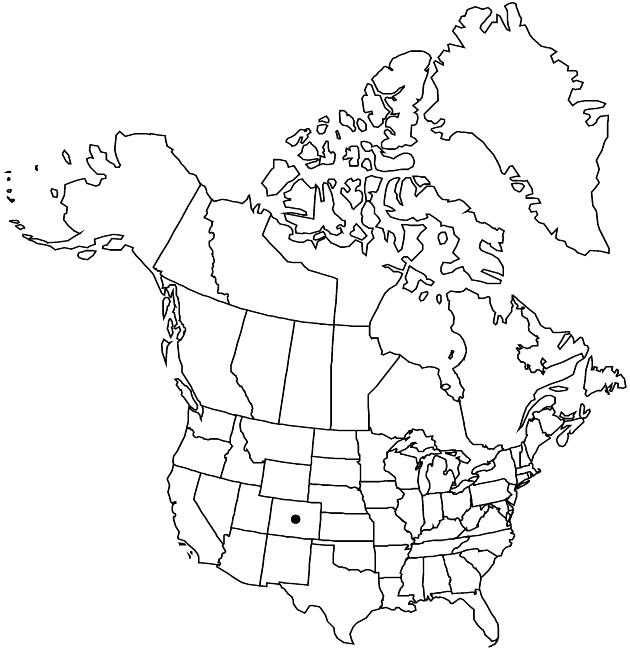Erigeron wilkenii
Madroño 37: 184, fig. 1. 1990.
Perennials, 10–20 cm (occurring mostly singly); taprooted, caudices simple or branches relatively slender. Stems erect, sparsely strigillose (hairs white, stiff), eglandular. Leaves mostly basal (persistent); (gray-green) blades narrowly oblanceolate to subspatulate, 9–62 × 1–5 mm, cauline linear-bractlike (bases enlarged, purplish-membranous), margins entire, faces sparsely and closely strigose, eglandular. Heads 1. Involucres 3.4–4.6 × 6–8.5 mm. Phyllaries in 2–3 series, sparsely hirsute, minutely glandular. Ray-florets (8–) 11–12; corollas adaxially white, abaxially light pink, 4.5–6 mm, laminae not coiling or reflexing. Disc corollas 2.2–3.5 mm. Cypselae ca. 1.8 mm, 2-nerved, faces sparsely strigose; pappi: outer apparently 0, inner of (12–) 20–30 bristles.
Phenology: Flowering May–Jun.
Habitat: Sloping alluvium and colluvium at w-facing bases of sheer sandstone walls
Elevation: 1500–2300 m
Discussion
Of conservation concern.
Erigeron wilkenii is known only from Pool Canyon in Dinosaur National Monument.
Selected References
None.
